Do you need an expensive power supply to have a quiet rig? Strictly speaking, you do not. But it depends on many things…mainly you.
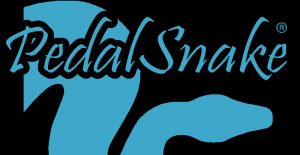 Guitar Noise Manual by PedalSnake®
Guitar Noise Manual by PedalSnake®
.
 Jody Page, PedalSnake’s inventor and lifelong pro guitarist, is an electrical engineer (a member of NASA’s Space Foundation Hall of Fame, no less) with special training in electrical noise. In the Guitar Noise Manual, Jody starts by breaking down guitar rig noise into 6 types:
Jody Page, PedalSnake’s inventor and lifelong pro guitarist, is an electrical engineer (a member of NASA’s Space Foundation Hall of Fame, no less) with special training in electrical noise. In the Guitar Noise Manual, Jody starts by breaking down guitar rig noise into 6 types:
1) BUZZ 2) HUM 3) HISS 4) DIGITAL NOISE (WHINE) 5) POWER SUPPLY NOISE 6) CABLE MICROPHONICS
For each noise, Jody explains its causes, then offers a targeted set of solutions. Also included are several helpful articles on general best-practices for noise reduction.
.
Do I Need An Expensive Power Supply?
Contents
Don’t Be Fooled–Isolation Is Not Always Isolation
Expensive Supply: Pros and Cons
The Quick Answer
Q: Do you need an expensive power supply?
.
“Need” being the operative word here. Well, contrary to sales hype…and we can’t stress this enough:
A: No, you do not need an expensive supply to have a quiet rig.
A Better Question to Ask
Should you get an expensive power supply?
The answer depends on your needs, experience, and budget.
By “expensive power supply”, we mean power supplies that mount on your pedalboard, and have multiple power outputs.

While not the most cost effective way to achieve quiet power, if you have a healthy gear budget, a good board-mounted power supply can be the quickest and easiest way to achieve a quiet rig.
.
Don’t Be Fooled–Isolation Is Not Always Isolation
Some board-mounted supplies have multiple outputs that are not isolated from each other. They may say their outputs are “isolated”, but all they have is a single isolated power supply (wall wart) wired to several outputs in a metal box.

So the outputs are not isolated from each other. This is the important part, and the part requires higher cost to do right.
So you may be looking at nothing more than a simple power chain.
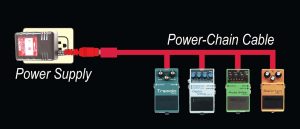 .
.
To be sure, there is nothing wrong with power chains. We love power chains. They are efficient, cost effective, and can be totally quiet.
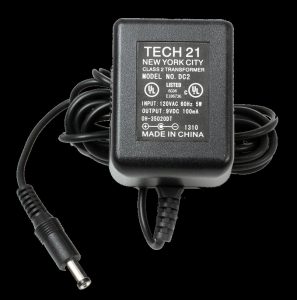 But the point here is, if you purchase a board mounted supply that only chains power, you have probably spent twice what you needed to. Because, to chain power, all you need is a good cost-effective wall wart.
But the point here is, if you purchase a board mounted supply that only chains power, you have probably spent twice what you needed to. Because, to chain power, all you need is a good cost-effective wall wart.
.
For more, see Power Chaining is Fine (When Done Right).
True Isolation
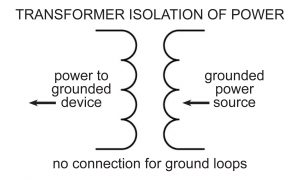 .
.
What you really want when you purchase a board-mounted power supply is to have all the outputs isolated from each other. And this will cost you.
Two ways to know if this is the case:
.
.
1. The cost will be more than $50 (usually a lot more)
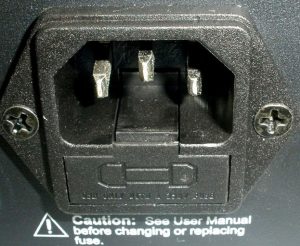 .
.
2. The supply will be powered with 120VAC utility power, not a single isolated wall wart
NOTE: Strymon Ojai and Ojai R30 supplies are possibly the quietest supplies out there, and NOT powered by 120VAC, but by 24V DC (one reason they are so quiet). (Check out the 24V Method by PedalSnake). Some of the MXR supplies are powered by low voltage as well; usually 18V DC.
.

If neither of these is not true, you are probably being fooled into buying a simple power chain device (see above).
.
The Downside
.
A good board-mounted power supply, with outputs all isolated from each other, will be expensive (hence our title).
But besides the cost, you should be aware of the other downsides to an expensive board mounted supply:
- Board-mounted supplies add weight to your pedalboard, and take up space (in many cases)
- You must run a power cord to your pedal area, preventing the “one cable only” solution of PedalSnake’s Low Voltage Method
 .
.
This second reason is important. Besides eliminating the power cord, PedalSnake’s Low Voltage Method has another advantage over a board-mounted power supply…
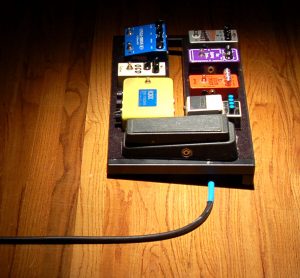 It is the quietest solution.
It is the quietest solution.
While the best of the board-mounted supplies will have an expensive toroidal transformer, which makes them quieter when placed right against a pedal, PedalSnake’s Low Voltage Method will move all power supplies (and transformers) completely off of your pedalboard.
.
There is nothing quieter than that.
.
Conclusion
Expensive Supply: Pros and Cons
There are some well designed board-mounted power supplies, with all isolated outputs, that are excellent solutions for powering guitar pedals. They have their advantages and disadvantages.
Expensive power supply advantages:
- They can solve your noise problems quickly and easily
- Can be placed close to pedals quietly (the ones with toroidal transformers)
- All outputs are isolated, so every pedal can be isolated from everything else (good but rarely necessary)
Expensive power supply disadvantages:
- Cost ($160 or more for the good ones)
- Add several pounds to your board weight
- Take up space (on some boards)
- Many have primarily low current outputs (100 mA), posing problems for certain pedals, and limiting power chains
- Require an AC power cord run to your pedals, preventing PedalSnake’s Low Voltage Method
.
Wall Wart: Pros and Cons
Wall warts are less costly, but when used properly, can be just as quite as an expensive power supply.
.
You can always read more at Use Good Power Supplies (yes…wall warts are fine)
.
Wall wart advantages:
- Low cost
- Quiet operation
- True transformer isolation (one supply at a time)
- Healthy current ratings; 200 to 500 mA (in most cases)
- Ideal to move to the backline for PedalSnake’s Low Voltage Method, for”one cable only”
- May require more than one for proper isolation, which…
- …may require more know-how in complex rigs
- May not be quiet when placed right up against a pedal
.
It Comes Down to You
Yes, it really does.
To be totally politically incorrect, at one end of the spectrum, the ideal type of player who should use wall warts:
Has some tech savvy and little money. He is actually proud of the fact that he could engineer a super quiet rig using all wall warts, and saves money to put towards better gear.
.
At the other end of the spectrum, the ideal type of player who should use an expensive power supply:
Has little tech savvy and money is not a problem. He would rather just spend the money and be done with it.
.
Where do you fall?
 .
.
.
.
.
Oh, you want to know our opinion?
Our Opinion
Well, you sacrifice nothing sound-wise with a standard wall wart from a reputable pedal maker.
When used properly, is just as quiet as an expensive supply (in fact, they are as quiet as a battery…we tested this). This is why the Guitar Noise Manual and at www.pedalsnake.com, offer so much instruction on how to use wall warts quietly. It is not hard, just follow a few simple rules.
You can read more about this at Use Good Power Supplies (yes…wall warts are fine)
While we encourage players to do what is best for their situation, we also encourage players to be smart (and we help them) when making gear purchases, especially since most gear budgets have limits.
So, in the case of power supplies, we say “use discrete transformers wisely (wall warts)”, and save your money for a better amp or guitar.

